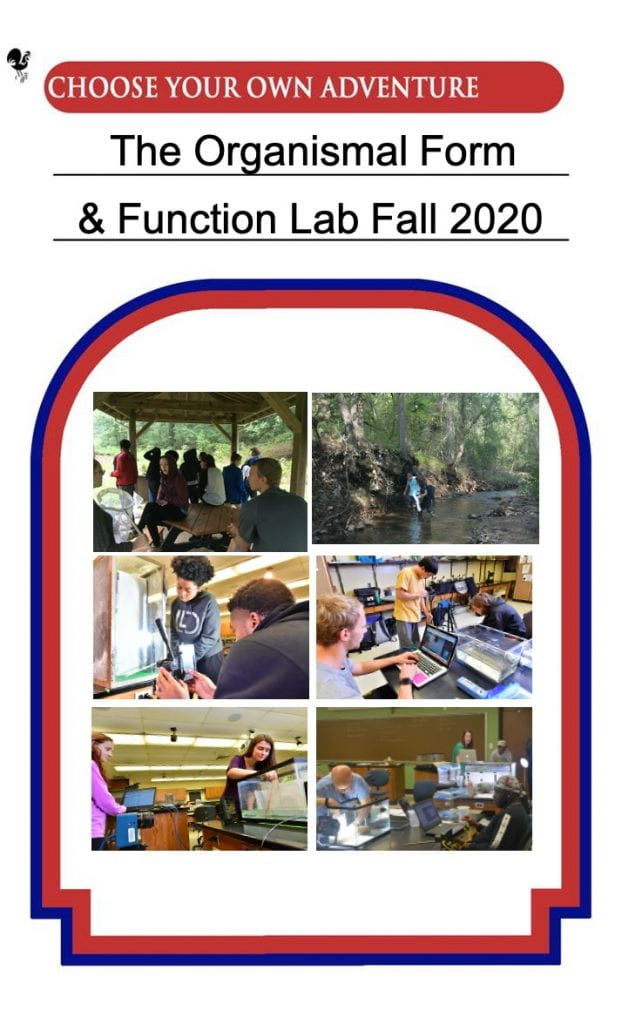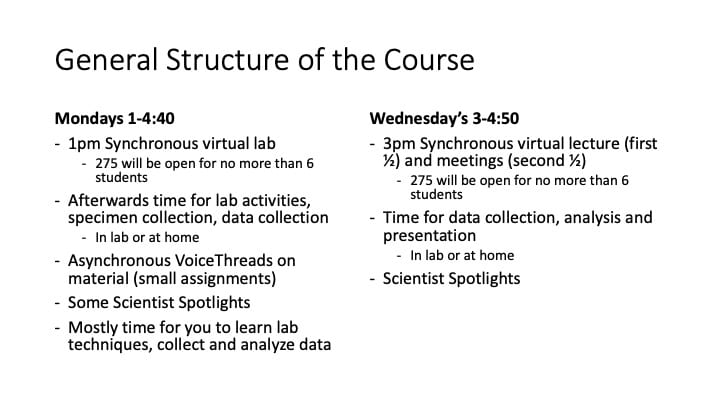Well, we made it to the end of the semester. As I mentioned at the beginning, I thought teaching this class this second time around would be easier, little did I know I would be doing it in a pandemic with most of it being remote. I think there are some aspects that worked okay remotely and I think there are some things that benefit from in person instruction. I am impressed with what the students were able to accomplish this semester, conducting research from home. After summarizing what we did the last two weeks, I’ll highlight my impressions of pros and cons from the semester. I’m also going to be posting sample slides from the students final presentations to highlight what they did this semester in another post/on Twitter.
Week 15 was our last full week of class. I did not have much planned this week except for one on one meetings. As I’ve mentioned in previous posts, there has been a lot of disparity in where students were with their research, so the individual meetings were a chance for me to try and get everyone on the same page. On Monday, we all met briefly then had individual meetings. Most of the meetings were dedicated to finalizing results. At this points students had their data files together so we could continue to work in R to get some results. Assignments due were a data upload to our OneDrive, something I hadn’t done before, but wanted to highlight data transparency, a progress report on Monday and their final VoiceThread presentations on Friday. That Friday our Department held the annual research symposium, virtually. Normally I have students present, this year it was an option, with one student opting in. On Wed. I held optional one-on-one meetings, no formal class time. this allowed students who were behind to catch up, while allowing students who were ahead not to have to worry about coming to class. Week 16 we only had our Monday class as finals stated on Tuesday. We all met and reflected on the class, then I had final individual meetings. Their final papers are due this coming Friday. And that’s it.
So, how did it go. Let’s start with the pros of the class. First, I am really impressed with what the students accomplished this semester, as I was the first time I taught the class. They all did great. I emphasized to them that they ALL have research experience now. We went from nothing, to full project ideas, data collected, and results. Many of the students are in our Animal Behavior program that requires an internship. Most of those internships were (or are) cancelled, so this was a great opportunity for them to gain some experience. The advances in high-speed filming on everyday devices definitely made this class possible remotely. While I was worried about some students not having the capability and was prepared to offer solutions, they all did and used the technology. Without that, this would not have worked. Students again got to research something that interested them specifically, which is always a HUGE benefit. Many students took advantage of their surroundings, one student who was home at the Jersey Shore, researched sand crabs and was amazed at what they learned about creatures they have seen their entire life (like moving backwards). Others took inspiration from the insects around their porch lights or nearby woods. Those that came in (only 3-4 for a few weeks this semester) got over their “fear” of insects and mentioned that this class opened up a whole new area of research to them after working on katydids. So, the core goal of the class, for the students to get research experience, was still there. Lastly, drawing inspiration from our Zoom meetings and others to hold Scientist Spotlights with amazing researchers from around the country remains a highlight. And I know the students really enjoyed having other researchers join us. Again, thank you to those that came.
Cons of this semester, aside from the normal malaise associated with Zoom. There may be more, but it is from my perspective teaching it so I’ll summarize my main thoughts. First, it was still challenging to teach, mainly because of the remote content, disparity in student’s progress, and not being able to directly interact with students. By the end I realized that I was managing 9 (several students dropped) independent research projects that were not part of my lab’s research. This was a lot. But, if I ever have to do it again, I will go in planning for this. I did not force students to work in groups, and none decided to, so they all worked individually. I think this is a con. Students often benefit from their interactions and brainstorming. I think some of the disparity in progress was due to this. If I had to do it again, I’m not sure if I would force group work or not. It did make it easier as there was no peer evaluation, which I still haven’t quite figured out how to fix. While students did amazing on their own, it is better when we are together, especially for brainstorming project ideas and getting animals to cooperate. While they all got videos, none got the sample sizes we had in the first iteration. I think many spent more time refining their project and were switching up late into the semester. Being in person, we can move ideas and troubleshoot filming setups more easily. Lastly, analyses and R. I had trouble instructing students in R the first time around, but it happened at the beginning of the course to get kinematics using some code I have for the course. This time, we had trouble at the end with analyses. As I mentioned in previous posts, I had multiple sessions to work through analyses, and still wound up doing most of it with them in personal meetings. Still not sure how to get around this.
So, this is the end. Hopefully next time I teach the class we’ll be back to in person (and in a new science building as we are preparing to move into it now!). Again, the students amazed me and they did great given their constraints. I wouldn’t recommend doing a course like this remotely, but with this specific topic of quantifying animal movement with high-speed cameras, it did work remotely thanks to advances in technology. I did have a few researchers offer their high-speed videos to analyze (thank you for the offers), but students really wanted to collect the videos themselves. I’m just waiting for them to submit their final papers, but this was an interesting semester. At least I’m on sabbatical in the Spring. Good luck to the rest of you!

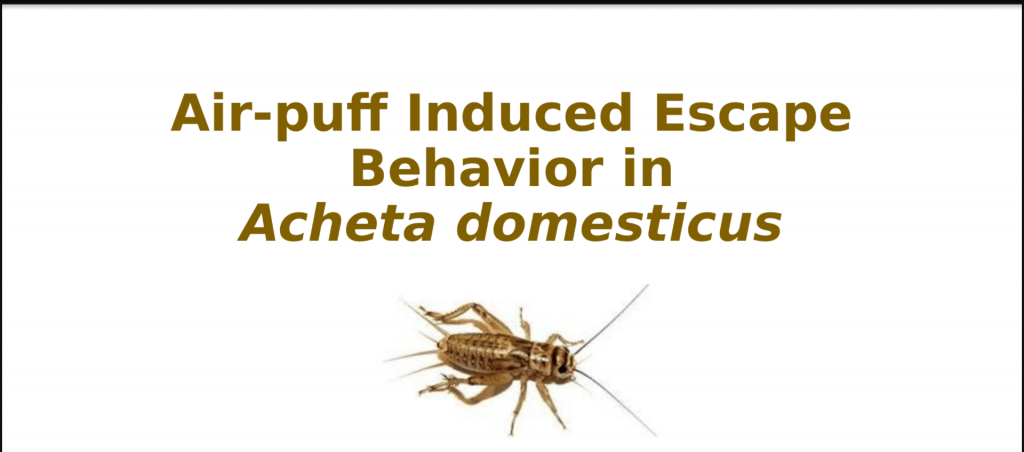 Week 10 started with a small lecture on what an annotated bibliography is as that will be our next large assignment. There was a Research Proposal VoiceThread presentation due at the start of class Monday. This is one thing I changed due to the nature of the class. Normally there are only 4 or so presentations as students are working in groups. Since everyone is working independently, we would have 10 presentations. Instead of doing it synchronously, having more Zoom time, I turned it into a VoiceThread assignment. Students uploaded their presentations to VoiceThread and commented over their slides for their presentation. This worked well, aside from some formatting issues with VoiceThread. They can do the presentations at their own pace without having to sit online more. Students continued to collect videos and worked on projects, at home for most. The students coming in continued to collect videos of their animals. Wed. saw our second set of student presentations, summarizing articles from the primary literature.
Week 10 started with a small lecture on what an annotated bibliography is as that will be our next large assignment. There was a Research Proposal VoiceThread presentation due at the start of class Monday. This is one thing I changed due to the nature of the class. Normally there are only 4 or so presentations as students are working in groups. Since everyone is working independently, we would have 10 presentations. Instead of doing it synchronously, having more Zoom time, I turned it into a VoiceThread assignment. Students uploaded their presentations to VoiceThread and commented over their slides for their presentation. This worked well, aside from some formatting issues with VoiceThread. They can do the presentations at their own pace without having to sit online more. Students continued to collect videos and worked on projects, at home for most. The students coming in continued to collect videos of their animals. Wed. saw our second set of student presentations, summarizing articles from the primary literature.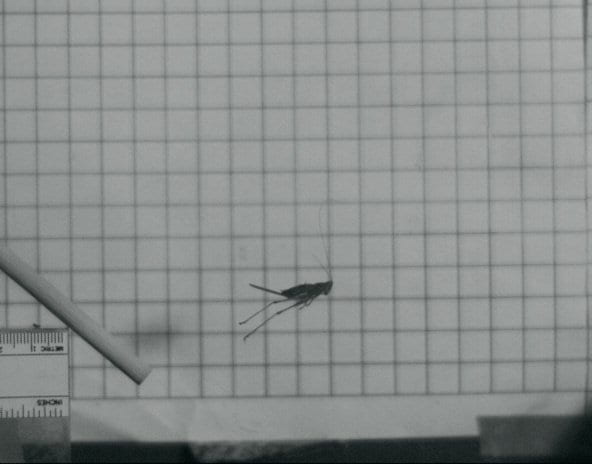

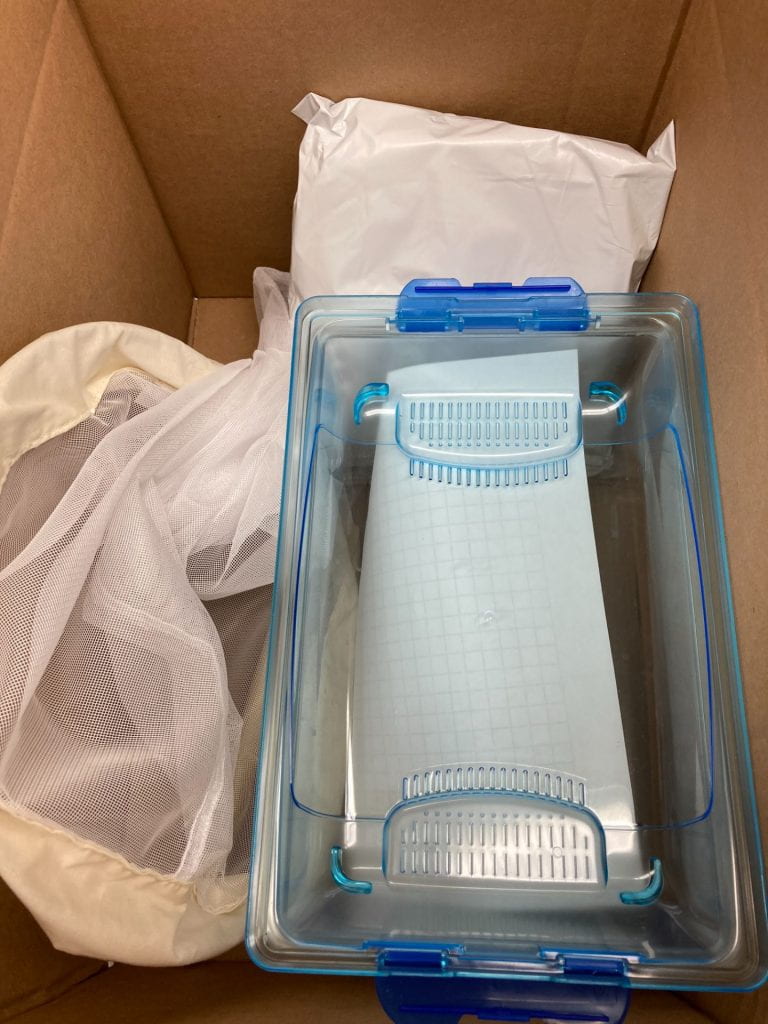
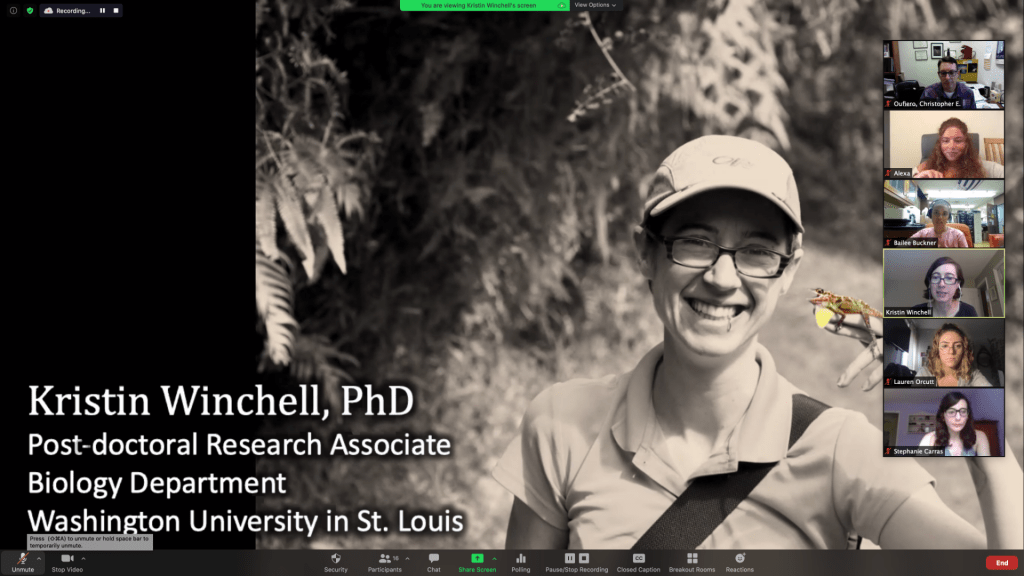 Wednesday’s class was a bit smoother. I had the right zoom time to start. I lectured from my office on my computer, taking the time to have powerpoint, Zoom participants and chat open, so I could see them all at once. We discussed factors that might affect performance. The highlight of Wed. was our first Scientist Spotlight.
Wednesday’s class was a bit smoother. I had the right zoom time to start. I lectured from my office on my computer, taking the time to have powerpoint, Zoom participants and chat open, so I could see them all at once. We discussed factors that might affect performance. The highlight of Wed. was our first Scientist Spotlight. 